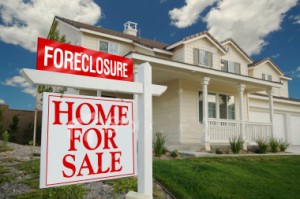This article was written by the Vancouver Sun to counter the article written earlier by the Globe and Mail. The Globe and Mail article claimed that Canada has an evolving subprime mortgage problem due to reduced lending standards over the past few years. To read the Globe and Mail article click here. What do you think about this “subprime problem” in Canada, is it just a fear-mongering or is there some truth to these theories?
A foreclosure on a family home is a heart-wrenching human tragedy. As the recession takes its toll on household income, the number of foreclosures is increasing. Fortunately, they remain relatively rare, and pose no systemic threat to Canada’s financial system, in stark contrast to the subprime mortgage meltdown that ravaged the U.S. economy. Despite what you may have read elsewhere, Canada does not have a subprime mortgage crisis. An article in a Toronto newspaper this week carried the alarming headline, Canada’s dirty subprime secret, but it offered little evidence that loans to unqualified borrowers were a secret or dirty — or for that matter, subprime.
The article focused on extreme anecdotes of homeowners using their property as collateral to get loans, and taking new loans to pay off old loans, hoping to squeeze out a profit through repeated refinancing. That hardly supports a case that Canada is awash in subprime mortgages. In fact, its only statistical defence for the thesis was a misrepresentation of a 2006 report by CIBC World Markets economist Benjamin Tal. The article stated that Tal estimated that subprime loans were growing at a “meteoric” pace of 50 per cent and that more than 85,000 Canadian homeowners had subprime loans. He did no such thing. What Tal said was that the market for non-standard and subprime mortgages was growing at that rate and that, in that year, the growth of the non-conforming market enabled no fewer than 85,000 Canadians who would otherwise have been shut out of the market to become homeowners.
Non-standard, or non-conforming mortgages, sometimes referred to as Alt.A, are not subprime. They are given to borrowers with good credit histories and have low loan-to-value ratios. However, they do not meet bank guidelines for conventional mortgages (good employment history, credit score above 700, 25 per cent down, gross debt service ratio below 30 per cent.) Subprime mortgages, on the other hand, are given to borrowers with bad credit and little or no income, have high loan-to-value ratios and often a low asset base. In the U.S., some of these loans were dubbed Ninja mortgages — no income, no job, no assets. Tal estimated that, in the U.S., those with bad credit account for only 30 per cent of the non-conforming market, but two-thirds of total losses.
Non-conforming and subprime loans represented between five and six per cent of all mortgages written in Canada in 2006, 2007 and 2008, compared with 22 per cent in the U.S., and analysts put the maximum potential at no more than 10 per cent. The federal government’s reversal of its ill-considered loosening of insuring criteria governing the Canada Mortgage and Housing Corp. and the general credit tightening globally will likely keep the share of the market below that potential.
As the housing bubble inflated, U.S. subprime lenders began to aggressively market their services to Canadians, but they have captured only a tiny portion of the mortgage market, which is dominated by the chartered banks, with the vast majority of high-ratio loans insured by CMHC. The recession has curtailed the activities of non-bank lenders, although they may resume when the economy recovers. Individuals must take responsibility for their personal finances, not borrow more than they can afford, be wary of teaser rates and other sharp marketing practices, and understand the terms of their mortgages.
Last month, Prime Minister Stephen Harper told CNBC in New York that Canada has avoided the subprime mortgage problem that has bedevilled the U.S. He was right then and has not “grossly underestimated” the impact of subprime lenders in Canada, as the newspaper article claimed. While there has been a doubling of foreclosures last year over a year earlier, B.C. has the lowest rate of non-conforming mortgages in the country. And here’s another factoid to consider: The percentage of Canadian mortgages in arrears for three months or more was just 0.3 as of December 2008.
Like other nations, Canada is coping with the global recession. While it is better positioned than many others, it still faces job losses, falling exports, low resource prices, weak consumer spending, declining government revenue and rising debt levels. One problem it doesn’t have is a subprime mortgage crisis.

